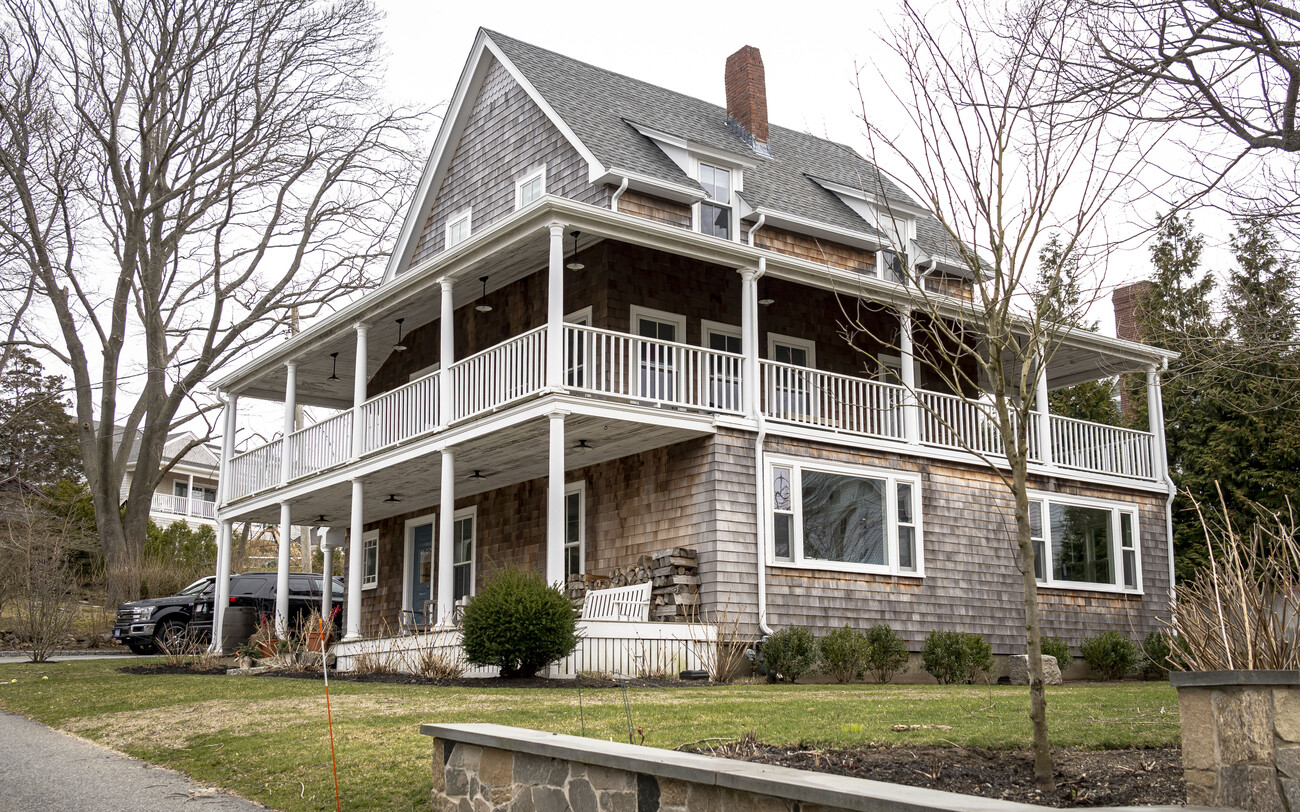Nowadays, when you hear someone say “iced out,” that means that someone is wearing a lot of diamonds, exuding luxury. But for John Josiah Bright, he was “iced out” with another sort of luxury.
John Josiah Bright is not to be confused with his father, Josiah Bright, or his son John Josiah Bright Jr. Each of the three men have different stories.
On April 21, 1880, John Josiah Bright inherited land on Marblehead Neck from Ephraim Brown. Part of that land would become the plot that today is 9 Andrews Lane.
Though John Josiah had property in Marblehead, the family homestead was on the shore of Fresh Pond in Cambridge. This was a good spot too, considering his father’s profession.
Thanks to the 1907 issue of the Cold Storage and Ice Trade Journal, we know that Josiah Bright was an ice harvester. Dare I say, he was an ice-trepreneur.
The author, John Josiah Bright Jr., wrote, “About the year 1823, Josiah Bright, of Watertown, Mass., whose homestead bordered on the show of Fresh Pond, conceived the plan of cutting ice for the Boston market.”
Additionally, he wrote that for 43 years, Josiah supplied Massachusetts General Hospital with ice — specifically “less than 100 pounds of ice per day… The amount of ice used increased very considerably.”
Before keeping our food cold just meant plugging in an appliance, people relied on giant blocks of ice to ensure the preservation of our food’s quality. Or, you could rely on salting, curing, pickling, and other methods, but I do not know if John Josiah Bright, his father, or his son did any of that.
In 1866, John Josiah Bright, his brother Horace, and two other parties consolidated their ice-harvesting businesses into the Boston Ice Company. Horace was the president of the company and John Josiah took over the route- and customer-side parts of the business.
Just a short seven years after inheriting the Marblehead tract of land, John Josiah Bright sold half of it to Frank E. Bowers, a milk dealer, according to a document from the Massachusetts Cultural Resource Information System (MACRIS).
The stipulations to the deed were specific, according to MACRIS, which noted restrictions including “limiting construction to a single-family dwelling of a value no less than $3000 without consent of the grantor and for a term of 10 years from the conveyance permitting no barns or stables within 50 feet of Harbor Ave. or the division line with (John Josiah) Bright.”
John Josiah Bright previously had a view of the harbor, and the restrictions made sure he would not lose it.
9 Andrews Lane is one of the two buildings Bowers built on the property, and is the one with more historical integrity, according to MACRIS. Both buildings, however, have had significant alterations.
Today, 9 Andrews Lane carries the historic name “Bowers Family Cottage,” after the milkman and his family. But I think we should keep in mind that, without ice, Bowers’ milk would have likely spoiled.

